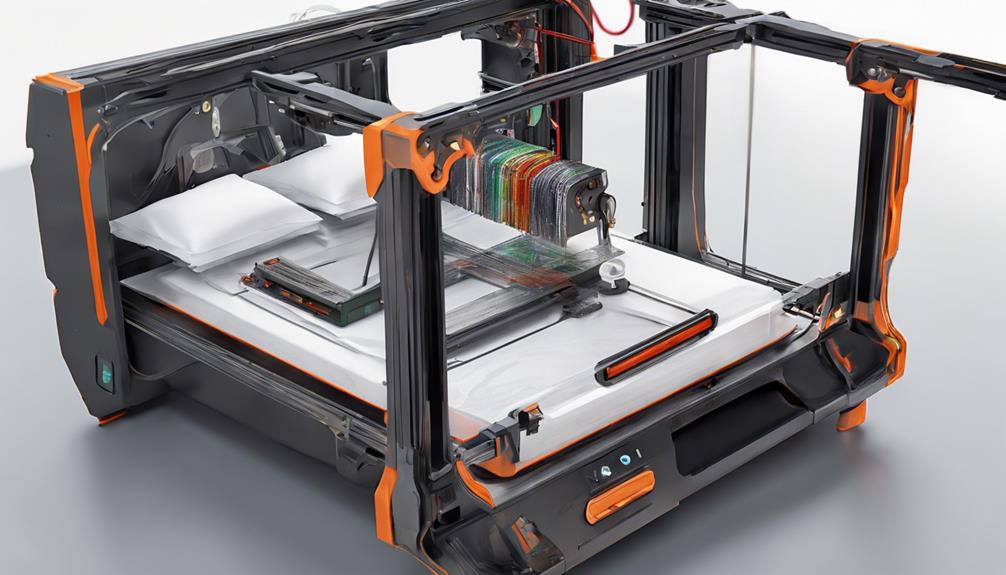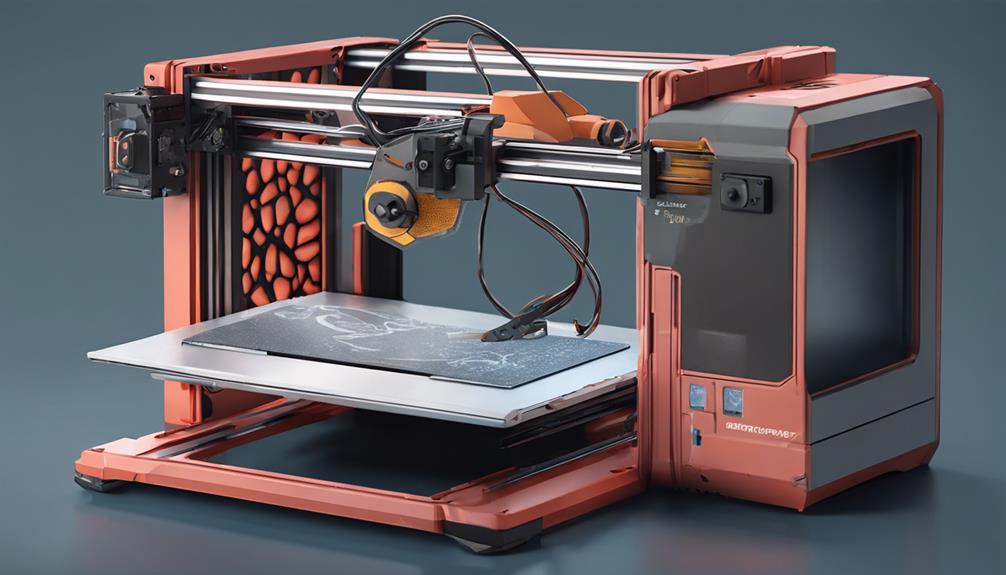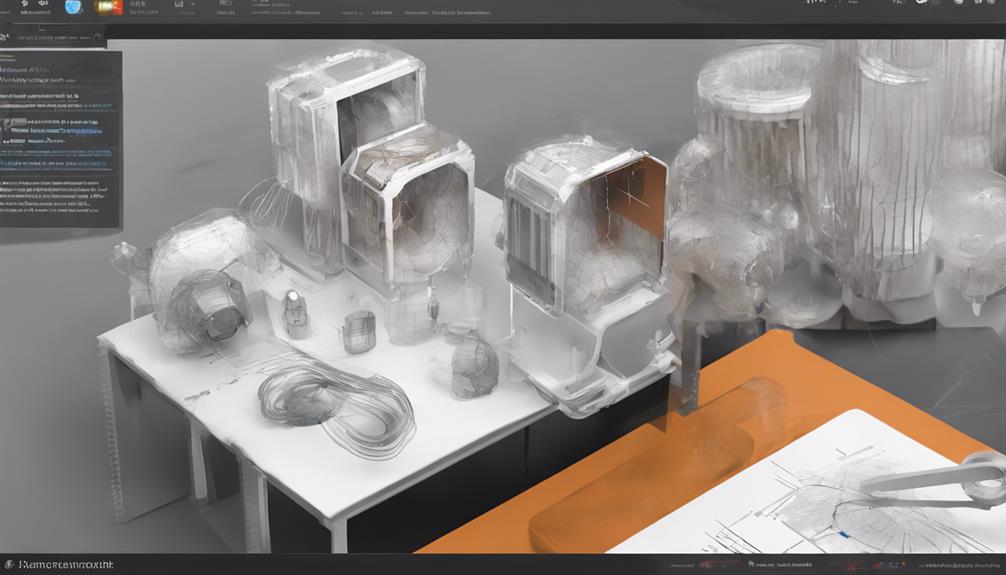The integration of cutting-edge sensors into the world of 3D printing has sparked a significant shift in how users approach precision and quality. These sensors, ranging from capacitive to IR and Piezo options, have redefined the calibration process, offering unparalleled nozzle-to-bed distance control. With a focus on speed, accuracy, and longevity, these advancements promise a new era of possibilities for enthusiasts and professionals alike. The impact of these sensors extends beyond mere functionality, promising a transformative experience in the domain of additive manufacturing.
Importance of Auto Bed Leveling Sensors

The utilization of auto bed leveling sensors in 3D printing greatly enhances print quality and reliability by ensuring precise nozzle-to-bed distances for excellent printing outcomes. Properly leveled beds are essential for successful prints and help mitigate issues related to warped build plates. These sensors play an important role in adjusting the distance between the bed and nozzle to guarantee ideal printing conditions.
Various Types of Bed Leveling Sensors
Exploring the diversity of bed leveling sensors reveals a range of specialized technologies designed for distinct printing environments and requirements. Capacitive sensors measure capacitance and are sensitive to temperature and humidity, while inductive sensors work well on metallic surfaces and require z-offset adjustment. Physical Hall effect sensors like BLTouch are reliable with mechanical moving parts but are unaffected by environmental conditions. IR sensors detect infrared radiation and work on various surfaces, measuring height accurately. Piezo sensors provide precise contact sensing and work effectively on different printing surfaces. Below is a comparison table showcasing the key features of these bed leveling sensors:
| Sensor Type | Surface Compatibility | Temperature & Humidity Sensitivity | Precision |
|---|---|---|---|
| Capacitive | Various | High | Moderate |
| Inductive | Metallic | Moderate | Moderate |
| Physical Hall Effect | Various | Low | High |
| IR | Various | Low | High |
| Piezo | Various | Low | High |
Precision and Performance Considerations

Delving into the domain of 3D printing technology, precision and performance considerations play a pivotal role in selecting the best sensor for achieving high-quality prints.
When comparing sensors for bed leveling in 3D printers, capacitive, inductive, and physical Hall effect sensors provide similar precision levels. However, sensors like the Duet 3D smart effector, IR sensor, and hotend mounted Piezo sensor offer enhanced precision. Among these, the hotend mounted Piezo sensor stands out as the most precise option.
In relation to performance, the probing speed varies with capacitive sensors being fast, inductive sensors operating at a moderate pace, and the physical Hall effect sensor being slower due to mechanical parts. Additionally, while capacitive sensors are sensitive to environmental factors, the Piezo sensor excels in accuracy and durability.
Probing Speed and Durability Factors
Shifting from considerations of precision and performance in selecting 3D printer bed leveling sensors, the focus now moves towards evaluating probing speed and durability factors to optimize printing efficiency and longevity. When evaluating these factors, it is important to take into account the following:
- Probing Speed Factors:
- Capacitive sensor: Fast probing speed.
- Inductive sensor: Works well at a moderate speed.
- IR sensor: Efficient for restricted spaces.
- Durability Factors:
- Capacitive sensor: Sensitive to temperature and humidity.
- Piezo sensor: Known for accuracy and longevity.
- Combined Efficiency:
- Piezo sensor combines precision and quick probing speed, making it a favorable choice for optimizing 3D printing processes.
Versatility and Best Sensor Recommendations

When evaluating versatility and recommending the best sensors for 3D printing applications, a focus on surface compatibility and reliability is crucial. For glass beds, the Physical Hall effect sensor stands out for its ability to detect all surfaces and remain unaffected by temperature and humidity changes.
IR sensors offer advantages with their light and small size, making them suitable for various applications. In particular, the BLTouch sensor is a recommended choice for beginners due to its ease of installation and reliability across different surfaces, including glass.
Ensuring the sensor's compatibility with the printing surface and its reliability under different conditions is essential for achieving excellent results in 3D printing.
Frequently Asked Questions
Can Auto Bed Leveling Sensors Fix Warped Build Plates?
Auto bed leveling sensors play an important role in fixing warped build plates by adjusting the distance between the bed and nozzle. Sensors measure specific points, ensuring proper leveling for successful prints, with different types catering to various surfaces and environmental conditions.
How Does Temperature Affect Capacitive Sensors?
Temperature affects capacitive sensors by altering the dielectric constant of materials, impacting their sensitivity and accuracy. Changes in environmental temperature can lead to variations in sensor readings, necessitating recalibration to maintain consistent performance and reliability in 3D printing applications.
Which Sensor Type Is Best for Metallic Surfaces?
For metallic surfaces, the best sensor type is the inductive sensor. It is designed to work specifically on metallic surfaces, requiring a z-offset adjustment for calibration. This sensor type is ideal for ensuring accurate and successful 3D prints on metal platforms.
Are Piezo Sensors Suitable for All Printing Surfaces?
Are piezo sensors suitable for all printing surfaces? Piezo sensors excel in precision and accuracy, making them suitable for various printing surfaces. Their contact-based detection guarantees reliability across materials, contributing to high-quality 3D prints on different substrates.
What Makes BLTOUCH a Recommended Choice for Beginners?
BLTouch is recommended for beginners due to its ease of installation and reliability. It caters to various surfaces, including glass beds. The sensor's user-friendly setup and consistent performance make it a popular choice for those new to 3D printing.
Conclusion
To sum up, the integration of cutting-edge sensors in 3D printing has transformed the precision and reliability of the printing process.
These sensors act as a guiding light, much like a lighthouse in the darkness, ensuring the best nozzle-to-bed distance for exceptional print quality.
By carefully selecting the right sensor based on specific needs and surface compatibility, users can navigate the complexities of 3D printing with ease and achieve remarkable results.